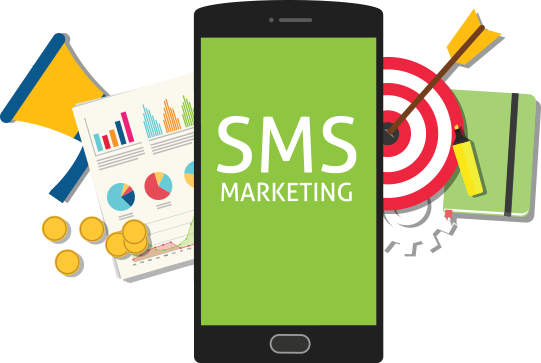In the rapid pace of today’s healthcare, the communication by providers, patients, and other vested interests becomes so much more critical. Perhaps one of the most vital areas that spells success for this day and age is targeted messaging. Traditional marketing would be involved with a general message broadcast to a wide audience. Targeted messaging instead involves correctly communicating a tailored message to a particular audience at a particular time.
Increasingly Complex Healthcare Marketing
With increasing competition in healthcare due to advances in technology, shifting regulations, and changes in the roles of patients, the balance of power is shifting. Today, patients are informed and empowered with more knowledge through the internet. It has given them an idea of the choices available in the field of healthcare, treatments, and providers.
On the other hand, this has also meant information overload, whereby patients struggle a lot going through volumes of data in search of what is most relevant to them. Targeted messaging thus helps health organizations reach their audience with timely, clear, and personal information that speaks to the particular needs of their target audience.
Targeted messaging ensures that every segment of the population receives information relevant to their personal health journey. The campaign targeted at the young patient, relatively tech-savvy, and eager for any form of wellness advice will be very different from one tailored for older adults in disease management. Personalization of such messages can help healthcare marketers increase patient engagement and engender trust for better health outcomes.
Why Targeted Messaging Matters in HealthCare Marketing

- Diversifies Patient Engagement
Today, patients expect personalized care. Targeted messaging can help healthcare organizations meet such expectations of their patients. Making information relevant and timely, providers are able to increase the level of engagement on the part of the patients and make them take active interest in their health management. The bottom line is that more clearly engaged patients are those who are more likely to follow treatment plans, seek preventive care, and make better decisions about their health.
For instance, certain campaigns related to the management of health-specific issues, such as diabetes management or heart health, may have educative content that can be targeted at an individual living with such a health condition. This will go a long way in building trust with the patients and further prove that indeed the healthcare provider views the patients as unique.
- Builds Trust and Credibility
Trust is perhaps one of the most basic elements of the patient-provider relationship. Targeted messaging builds trust because it speaks directly to a patient’s concern-whether that concern be about health, potential health issues, or treatment-with timely, relevant information. More general marketing messages are likely to seem impersonal and irrelevant to their situation, thus perhaps weakening trust. Messaging which speaks to a patient’s condition, treatment options, or healthcare needs generally goes a long way toward instilling confidence in the provider.
- Improves Conversions
In other words, with marketing, a conversion is the accomplishment of what is desired to be taken by one’s aspired audience: an appointment booked, a newsletter subscribed to, or even downloading a certain health resource. Target messaging will undoubtedly move the needle on one’s conversion rates, as it speaks to their needs, thus making them more drawn to the call to action.
For instance, a patient with backache will be more likely to react to an advertising campaign educating him on how to cope with chronic pain and giving him an opportunity to schedule an appointment with a specialist, rather than some general message about health as a whole, which may not even impress him or perhaps seem provocative. - Improves Patient Retention and Loyalty
Targeted messaging attracts new patients and also helps retain the old ones. It is personal follow-up messages, next appointment reminders, or further educational content about a patient’s condition that let them know the healthcare provider not only valued their relationship but was genuinely interested in their on-going well-being.
For example, personalized recovery information or long-term management following treatment may be sent to the patient. This, in turn, will enable them to remain in close contact with the health professional. The more personalized this is, the better the chance of gaining the long-term loyalty of the patient.

- Optimizes Marketing Budgets
Targeted messaging helps the organizations of healthcare use their marketing resources much more effectively. Rather than casting a wide net with some generic message, probably speaking more effectively to people out of scope, targeted campaigns zero in on people who are more likely to engage with that message. This ensures a better return on investment since targeting individuals ensures a higher probability of conversion out of the marketing effort.
Guided by segmentation and analytics, data-driven tools can help health care marketers isolate specific groups most likely to show interest in the use of a particular service. Examples of such groups may include seniors that might need replacement surgery or expectant mothers in search of pediatric care.
Key Components in Effective Targeted Messaging in Healthcare Marketing

- Segmentation
But targeted messaging’s not-so-secret sauce, really, is segmentation. It’s a division to pare down the target audience into an even smaller, better-defined group based on demographics, psychographics, health condition, behaviors, or whatever you want to segment, down to postal zip code. Tailored segments afford the healthcare marketer the ability to build messages that speak to exactly what a group needs or wants.
It could be that one segment would be people between the ages of 18 and 35 who take interest in health and fitness. Another could be those above 50 years with certain chronic diseases, living with arthritis or blood pressure. - Personalization
Personalization is accomplished by targeting a message that resonates with the audience. Whether naming the patient, delivering content related to their particular health concerns, or perhaps offering personalized recommendations, personalization will carry more relevance and interest in the message.
This in healthcare marketing can be any form-from customized e-mail campaigns to patient-specific reminders and phase-of-life customized content. For example, take the campaign for flu shot reminders, say, several weeks before the season sets in. The time is perfect for sending communications, with the subject matter relevant as well. - Data-Driven Insights
Data informs targeted messaging. Patient data helps health organizations learn from patients’ preferences, behaviors, and needs. Analytics can help marketers track patient interactions, outline trends, and further refine these approaches over time.
For example, the volume of content engagement-whether through blogging on heart health or in video form about diabetes management-can indeed fine-tune health care marketers to messaging topics that are material to their audience. - Clear and Concise Communication
Healthcare can be a pretty complicated subject, and clarity is one of the major factors with regard to targeted messaging. Be it some social networking site, an email, or a healthcare website, clarity, conciseness, and simplicity are the keywords. One should avoid using jargons and use the best patient-friendly language so that the message reaches very far.
Stronger calls-to-action will be needed to complete the next steps in taking care of the patient: booking an appointment, downloading a health guide, or contacting a specialist. This is how engagement and conversion will be driven. - Multichannel Approach
Today, patients interact with health care information on a variety of touchpoints: websites, social media, email, and even mobile applications. Because of that, health care marketers should apply the principle of multichannel marketing to reach the target patient population through various means by crafting messages for delivery on multiple platforms to reach them at their place of highest activity. For example, a younger population will have much better engagement with targeted digital advertising or social media campaigns, whereas email newsletters or direct mail reminders may reach older patients better.
Best Practices for Targeted Messaging
- Use Analytics on Patient Data: Use analytics to understand patient preference and behavior coupled with demographic data to drive informed segmentation and personalization.
- Content Mapping: Map content to stages in the patient journey, from awareness through to decision-making and aftercare.
- Testing and Refinement: Continuous testing of various messaging strategies to see what works best with your audience; refinement based on performance metrics.
- Stay Compliant: Ensure that the planned marketing by all means falls within the ambit of health care regulations, such as HIPAA, in maintaining patients’ privacy and data protection in the United States.
Conclusion
Targeted messaging is no longer a competitive differentiator; rather, it’s an absolute necessity in today’s rapidly changing healthcare environment. Data-driven insights into tailored communication and audience segmentation let healthcare marketers be confident that messages are resonating with their patients and building trust, driving engagement. Indeed, targeted messaging lets healthcare organizations attract and retain patients toward better health outcomes and more meaningful, patient-centered communication.
With all that in consideration, focused messaging becomes so much more than the delivery of information; rather, it looks toward the development of relations, improvement of patient experiences, and the guarantee of healthcare marketing success in meaningful and measurable ways.



